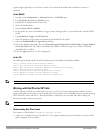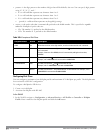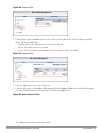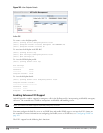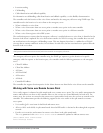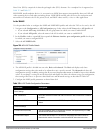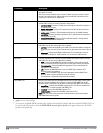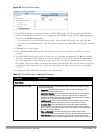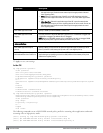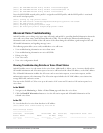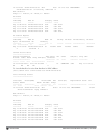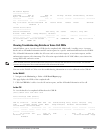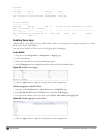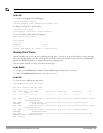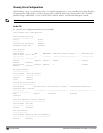
Figure 316: AP LLDP Profile Details
8. If the LLDP profile does not currently reference an LLDP-MED profile, you must associate an LLDP-MED
profile with the LLDP profile before you can configure any LLDP-MED settings. Click the Add a profile drop-
down list in the Profile Detailswindow.
l To associate an existing LLDP-MED network policy, click an LLDP-MED policy name then click Add.
l To create a new LLDP-MED policy, click NEW, enter a name for the LLDP-MED network policy, then click
Add.
9. ClickApply to save your settings.
10. Next, expand the LLDP-MED network policy profile in the profiles list, and select the profile you want to
configure.
11. The LLDP-MED network policy profile is divided into two tabs, Basic and Advanced. The Basic tab displays
only those configuration settings that often need to be adjusted to suit a specific network. The Advanced tab
shows all configuration settings, including settings that do not need frequent adjustment or should be kept at
their default values. If you change a setting on one tab then click and display the other tab without saving your
configuration, that setting will revert to its previous value. Both basic and advanced settings are described in
Table 317.
12. Configure the LLDP-MED profile parameters as desired then click
Parameter Description
Basic Settings
LLDP-MED application type Click the LLDP-MED application type drop-down list and select the application type
managed by this profile.
l guest-voice: Select this application type if the AP services a separate voice
network for guest users and visitors.
l guest-voice-signaling: Select this application type if the AP is part of a network
that requires a different policy for guest voice signaling than for guest voice
media. Do not use this application type if both the same network policies apply to
both guest voice and guest voice signaling traffic.
l softphone-voice: Select this application type if the AP supports voice services
using softphone software applications on devices such as PCs or laptops.
l streaming-video: Select this application type if the AP supports broadcast or
multicast video or other streaming video services that require specific network
policy treatment. This application type is not recommended for video applications
that rely on TCP with buffering.
l video-conferencing: Select this application type of the AP supports video
conferencing equipment that provides real-time, interactive video/audio services.
l video-signaling: Select this application type if the AP is part of a network that
requires a different policy for video signaling than for the video media. Do not use
Table 317:
LLDP-MED Profile Configuration Parameters
DellPowerConnectW-SeriesArubaOS6.2 | User Guide Voiceand Video | 718



